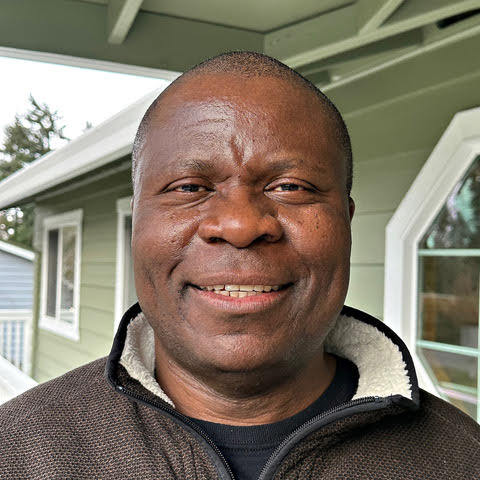What Makes the Kenyan Season of Goodwill Last All Year Long?
In her blog from earlier this year, Kenyan staff member Catherine Chepkemoi shared her experience living without clean water for so long. During this time, she needed help to afford higher education and, later, to build a home. Her community — including her friends, neighbors, and coworkers — helped her realize those dreams through a nationwide community-giving concept called Harambee.
In Swahili, the word Harambee means “all pull together.” The word represents a state of mind as well as a giving event. Harambee means people help each other when they face obstacles.
Yesterday, December 12th, marked when Kenya declared independence from England in 1963 (a holiday called Jamhuri Day in Kenya). There’s no better time to expound on the Kenyan people’s generosity of spirit than when the whole nation is celebrating 60 years as an independent country.
What Harambee Means to Kenyans
“[The] Harambee Philosophy or spirit is a national concept that was started by our founding president Jomo Kenyatta to encourage Kenyans to come together and help one another,” said The Water Project board member Ron Wamala, who grew up in Kenya.

“It’s a concept of communities coming together and contributing their resources to develop their communities. Politicians have used Harambees to build schools, clinics, roads, etc. The first borehole project in my village was built in the late ‘80s led by our Member of Parliament Moody Awori. It is still functioning today, and it has been sustained by the spirit of Harambee.
“Kenyan culture is community-oriented, and sharing our resources, food, [and] homes is part of our DNA. I don’t really remember being taught this as a child. It just came naturally. It was organic.”
“To me, Harambee represents a call to action, a rallying cry for unity and collective effort,” said Joan Were, Operations Manager at The Water Project’s Western Kenya Regional Service Hub.

“It signifies coming together as a community, contributing talents, and sharing the responsibility of uplifting one another. The dances and celebrations associated with Harambee events weren’t merely performances but expressions of the vibrant spirit that defined those moments.”
“Harambee…has transcended its linguistic roots to become a symbol of collective effort and shared purpose,” said Ashley Mkaiwawi, Regional Service Hub intern.

“The word Harambee has been a major form of national integration among people since it echoes the spirit of unity and collaboration. It aids people [to] understand the need of working together, as there is strength in numbers.
“As we all know, charity begins at home. The art of Harambee is introduced to one when they’re still young. In order to get the chores at home done, we have to comply with one another. In this way, we get to learn responsibility and the value of working together towards a main goal.”
The History of Harambee
“In Kenya’s educational curriculum, students are taught that Harambee is a fundamental concept deeply embedded in the nation’s ethos,” Joan explained.
“The Swahili term…emphasizes unity, collective effort, and communal responsibility. Historical lessons delve into the role of Harambee during Kenya’s struggle for independence, embraced by leaders like Jomo Kenyatta and Daniel Arap Moi to unite diverse communities toward common goals of nation-building and development.
In his story, Programs Coordinator Erick Wagacka shared both how Harambee helped Kenyans gain a sense of “self-reign” as a newly independent nation.
Memories of Harambee
“My brothers, nephews, cousins, and I shared our clothes, food, etc., and played together as kids,” Ron Wamala shared.
“As I got older, I have memories of our community coming together and going to work on a neighbor’s farm. So, the Harambee concept is a social experiment that has succeeded in Kenya. It is taught in schools, community gatherings, [and] churches, but it’s also more organic.”
“When recalling the term Harambee, it evokes memories of vibrant events from the ‘90s,” said Joan.
“These lively gatherings featured invited guests and the influential mheshimiwa (chief guest), usually a government official who brought substantial contributions in a big fat envelope for a common cause. This definition is deeply rooted in personal experiences, particularly during school days when Harambee events were organized to build classrooms and toilets. The word Harambee serves as a reminder of a time when music and community togetherness depicted shared goals and collective responsibility.”
Impact Communications Officer Olivia Bomji shared how her politician dad helped secure her school’s new buildings through the spirit of Harambee.
Harambee in Everyday Kenyan Life
“The Harambee concept very much affects the way Kenyans interact with one another on a daily basis,” said Ron.
“For example, I’m currently helping local preachers in my village to financially pay school fees for their children. We opened an account with a local bank in Kenya for preachers, numbering about 15. They each contribute a certain amount of money monthly to this account. My wife and I sent a significant amount of money to this account to help the preachers become self-supporting. The idea is that they will each continue their monthly contributions, then one at a time can borrow money to start a business and repay back, and then another preacher will do the same, creating a ripple effect.”
“Harambee is not just a concept taught in classrooms; its values are ingrained in students through practical examples,” said Joan.
“In public schools, students experience the application of Harambee firsthand. A tangible illustration is seen in the tradition of students carrying two pieces of wood, contributing to a collective pile used as fuel for preparing meals. This fuel benefits not only the teachers, but also Early Childhood Development (ECD) pupils and eighth-grade candidates for that academic year.
“Interestingly, the rest of the school does not directly benefit from this effort, emphasizing the principle of helping without expecting personal gain. The symbolism is powerful – students learn the value of contributing to a communal effort that extends beyond individual benefit.
“Furthermore, the eighth-grade students are assigned the task of bringing one kilogram of beans and maize (corn). Through collaborative efforts, they ensure there is enough food to feed the entire class for lunch. This practice reinforces the idea that by pulling together and contributing modest individual portions a collective abundance is created. It’s a practical and impactful lesson in the spirit of Harambee, teaching students the importance of selfless contribution and collective support for the well-being of the entire school community.”
“Some children get a chance to be in school through the Harambee forum,” said Ashley.
“Through various partnerships with the school, funds are raised for the less fortunate so that they can get a chance to get educated. The word has indeed inaugurated an unwritten law of prodigality, and regardless of gender, class, or background, we are able to assist anyone in need.”
The spirit of community generosity may start in school when Kenyans are young, but it doesn’t end there. As Joan explains, people in Kenya pull together well into adulthood.
“Harambee is a term deeply ingrained in the spirit of Kenyan community life, embodying the principles of unity, collaboration, and shared responsibility,” Joan said.
“In everyday practices like table banking, SACCOs, and merry-go-round groups known as chamas, the essence of Harambee comes to life. Table banking involves pooling funds within the community, promoting financial inclusion, and supporting small businesses. Merry-go-rounds, with their rotating contributions, showcase mutual aid and solidarity, reflecting the core of Harambee in shared economic endeavors.
“Chamas, extending beyond economic collaboration, also serve as a form of leisure for women, fostering friendships and networks. For many older women, Chamas provide a vital escape from the loneliness that can accompany old age. This social aspect underscores the holistic impact of the Harambee spirit on the well-being of individuals within Kenyan communities.
“The enduring Harambee spirit is evident even in the face of loss, as small-scale traders come together to support one another during times of mourning. They set up tents near the deceased’s business premises, playing music and rallying people to contribute funds collectively, covering funeral and medical costs. This tradition exemplifies the ongoing commitment to mutual support and solidarity within the community.”
Harambee at The Water Project
“Harambee is also practiced in The Water Project, just like any other organization,” said Ashley.
“We believe in collectiveness and cooperation for [the] effectuality of work. We ensure that all the work is completed in time through teamwork and helping each other in any way possible. Some of the ways we practice the Harambee slogan is by, for example, taking part in contributions to assist one of our colleagues when in need.
“Harambee has become a beacon of hope and progress in modern society. We are able to come together and collectively assist those who are in need. Together, we are able to deal with some of the obstacles that we may find challenging along the way and build a bright future for everyone.”
Programs Manager Protus Ekesa shared how the concept of Harambee helps community members in need of clean water pull together when construction materials are scarce.
Joan also shared a story about a time earlier this year when a Water Project employee was in great need, and all her fellow employees came to assist.
“I found myself right in the middle of a real-life Harambee whirlwind,” Joan shared.
“Early this year, Susan’s (Susan Kamole, Water Quality Officer at the Regional Service Hub) house turned into a fiery inferno due to an electrical malfunction.
“As the women gathered to console her, Humphrey (Humphrey Buradi, Regional Director of the Regional Service Hub) and his gang of male comrades were already donning their superhero capes, planning the blueprint for Susan’s new house. A colleague shared a construction plan, and Humphrey created a WhatsApp group comprising of colleagues, friends, family, and folks from the Deliverance Church. Oh, and they didn’t stop there – they roped in well-wishers faster than you could say Harambee.
“Cash started flowing in like a benevolent waterfall, and the next day, the ground was officially broken. The men worked tirelessly, and the women? Well, they showed up with food fit for superheroes. Walls went up faster than a superhero scaling a skyscraper, and the momentum kept building for weeks. Even The Water Project joined the league of superheroes, proudly donning the title of mheshimiwa as they dropped a hefty sum towards the roof fund.
“And guess what? It worked like a charm! The house rose from the ashes of misfortune, standing tall and proud.
“My personal Harambee rollercoaster taught me that when a community unites, even online, to support one another, the results are nothing short of spectacular,” Joan concluded. “It’s not just a fundraiser; it’s a joyous journey of shared laughs, online camaraderie, and the triumph of community spirit.”
Extending Harambee to the Entire World
During a time of reflection like the end of the year, it’s easy to look back, and look around, and wonder what you can do for someone else. Working on this blog made me reflect on my own experiences, where living in a “community” means nodding at my neighbors when I pass them — and not much else. I don’t know about the struggles they’re facing or the dreams they’re hoping to accomplish.
It makes me wonder if I should drop cards in their mailboxes, letting them know I’m around if they ever need something. For a shy person like me, it’s easier to contribute to an online fundraiser page for someone I don’t know than asking a real, live person I see every day how they’re doing.
Reading my Kenyan colleagues’ words has me hoping to change that — and hoping that Kenyans’ awe-inspiring commitment to those around them might spark a similar flame of goodwill in your heart.
As everyone lives increasingly online, I hope the world can become one global community. After all, nowadays, we can see and hear the experiences of people living in countries across the globe as if they happened right next door.
Every fundraising page, Water Challenge, and social media share is really just a version of the Harambee spirit. I hope you join us in getting everyone in our service areas clean, reliable water as we round out 2023 and become who we want to be in 2024.
Home More Like ThisTweet